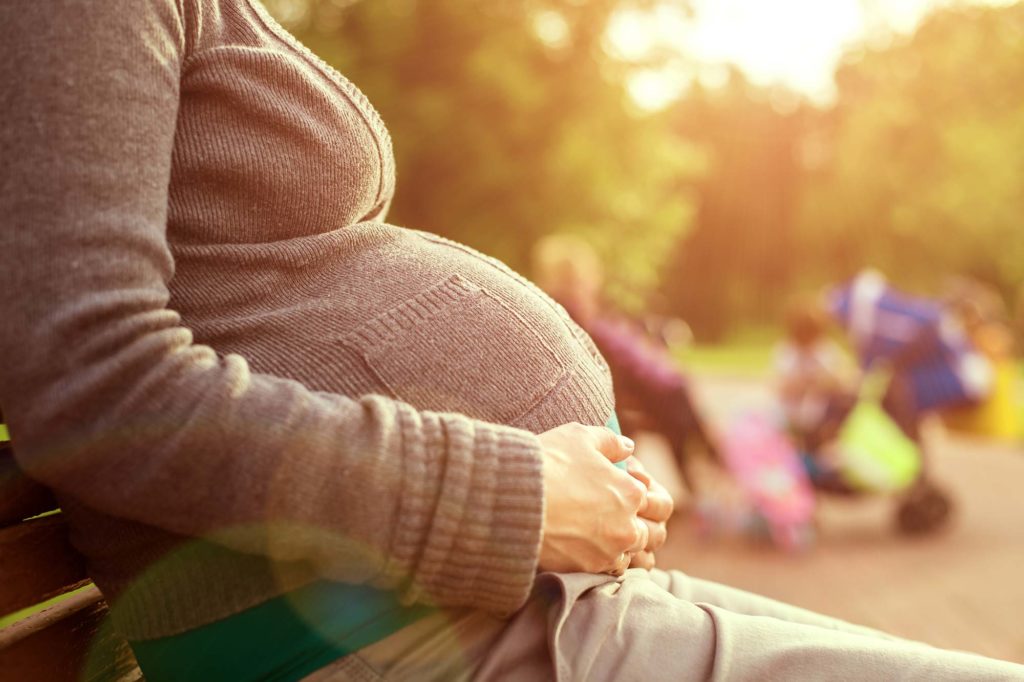
Varicose veins are often thought of as something that happens as a result of standing or sitting for long periods of time, but the condition frequently arises or worsens in women during pregnancy. For most women, varicose veins are simply annoying, but they present a risk for significant health complications in others. Women who are pregnant or planning on becoming pregnant should understand their risk for varicose veins and interventions necessary to prevent them.
During pregnancy, blood volume in the body increases. Other changes in the body happen as a result of hormones, and these changes allow the walls of the veins to relax to accommodate the additional blood. The additional blood coupled with the widening of blood vessels makes veins swollen and bulge out. Pregnancy also puts pressure on a large vein, known as the inferior vena cava, which is located on the right side of the body. This pressure increases the pressure in the veins of the lower extremities, causing further swelling and bulging.
The telltale signs of varicose veins are blue or dark purple-colored veins that bulge near the surface of the skin. In most patients, varicose veins appear in the legs and thighs, although they sometimes appear in other areas of the body as well. Some patients report feeling as if their legs are very heavy and also mention that their legs often feel itchy or like they are burning. “Some varicose veins patients also experience a throbbing sensation as well,” says Dr. Michael Budler, M.D, an interventional radiologist in Grand Island, Nebraska.
The majority of women who develop varicose veins during pregnancy find that their swollen veins subside after delivery. The condition may worse with subsequent pregnancies or pregnancies with multiples. Pregnant patients should take care to minimize periods of sitting or standing, exercise regularly, elevate legs and feet and by wearing supportive compression stockings. These stockings help to reduce swelling and facilitate blood flow.
Pregnant patients should also sleep on their left side in order to relieve pressure on the inferior vena cava, as well as on the veins of the feet and legs. Circulation is also increased, which is an overall benefit to the body and helps reduce swelling of the veins.
Varicose veins are generally harmless, and often just annoying, but some pregnant women who have varicose veins are at risk for developing a condition known as superficial venous thrombosis, or a small blood clot that occurs near the skin’s surface. This condition makes varicose veins very painful and extremely swollen.
Additional signs of superficial venous thrombosis also include fever and chills, cramping in the leg and swelling.
About one percent of pregnant women face an increased risk of developing a more serious thrombosis condition known as deep vein thrombosis, or DVT, according to the March of Dimes. DVT causes large clots form in the veins deep inside the leg. Signs of DVT include pain and swelling in the leg. If left untreated, a blood clot could cause a stroke or pulmonary embolism.
Budler uses a range of therapies to treat patients with varicose veins. One such therapy is microphlebectomy, a treatment in which damaged veins are removed via a small incision and a tool to hook them out. The procedure is minimally invasive, and the patient is back to normal activity soon after.
Another treatment offered by Budler is sclerotherapy, in which he salt solution into the vein, causing the vessel to collapse. Blood is then rerouted into healthier vessels. Patients see results of this treatment about a month later.
Budler also uses thermocoagulation to target varicose veins by collapsing them with low energy emitted by a small probe. Just like sclerotherapy, blood is then rerouted to new vessels. Patients who select thermocoagulation see results in just a few weeks.
Pregnant patients should discuss varicose veins with their health care provider, and take self-care steps under the direction of their provider to minimize their varicose vein and blood clot risk.
